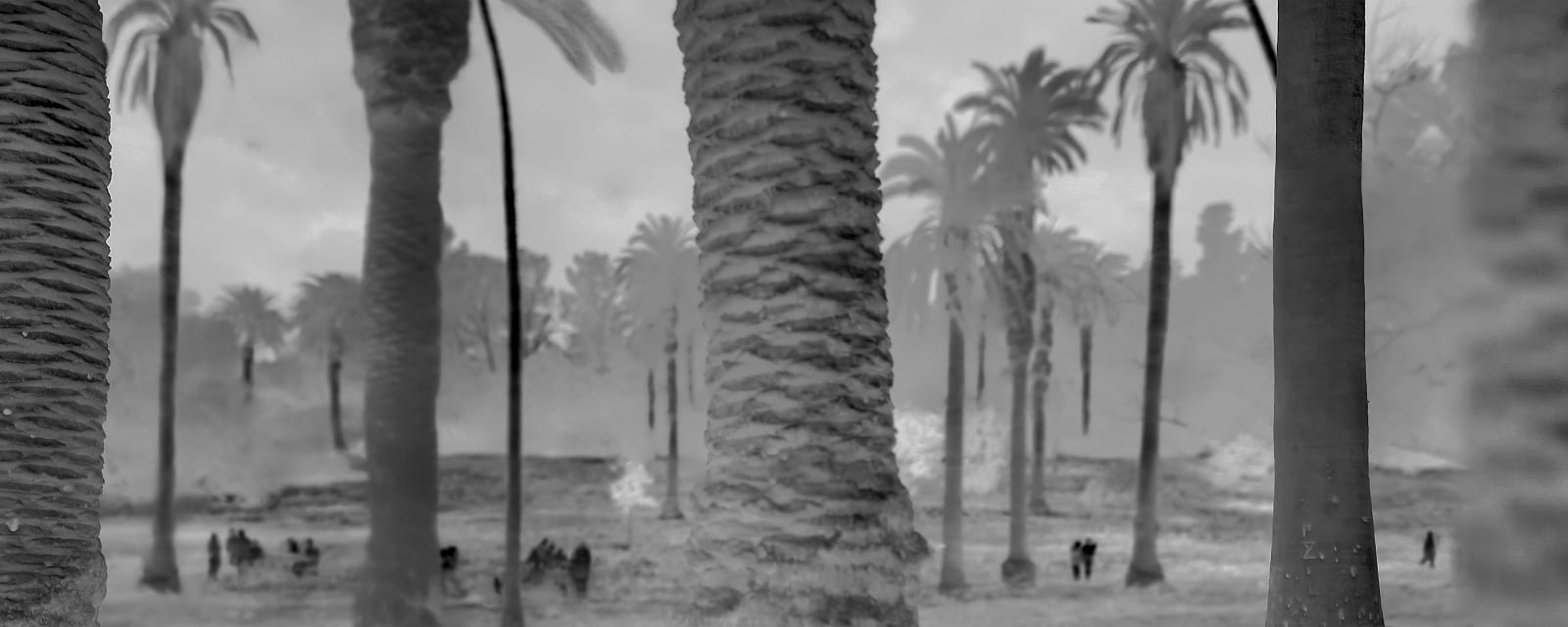Alex Turner American, b. 1984
Canary Island Date, Chilean Wine, and Mexican Fan Palms, Estimated 20-150 Years Old, Elysian Park, Los Angeles County, CA, 2025
Gelatin silver print mounted to museum board
8 x 20 in.
In the early 20th century, Los Angeles planted rows of palm trees to beautify the city—while also aiding surveillance. Tall, narrow, and widely spaced, they made it easier for officials...
In the early 20th century, Los Angeles planted rows of palm trees to beautify the city—while also aiding surveillance. Tall, narrow, and widely spaced, they made it easier for officials to monitor and deter public gatherings. Today, century-old Canary Island Date Palms along the Avenue of Palms in Elysian Park are dying from Fusarium wilt, and disease-resistant Chilean Wine Palms are being planted between them in preparation for their loss.
About the series:
Blind Forest is a cross-disciplinary study of how trees absorb and reflect human and environmental histories. Created in collaboration with ecologists, historians, and anthropologists, the project explores their capacity to reveal shifting climates, cultural values, and systems of power over time. Set across California, Blind Forest employs thermal imaging—commonly used in surveillance, fire detection, and tree health assessment—to visualize the conservation, transmission, and dispersion of heat. Each large-scale image is composed from hundreds of thermal exposures, treating heat as both data and narrative: a high-fidelity record of vitality, stress, and decay.
The trees featured here trace enduring tensions between extraction and preservation, survival and erasure, change and continuity. They are both ecological keystones and mirrors of human intent. In this precarious moment, Blind Forest invites us to consider trees not as passive scenery, but as active participants—living archives that conserve, transmit, and disperse meaning across generations.
About the series:
Blind Forest is a cross-disciplinary study of how trees absorb and reflect human and environmental histories. Created in collaboration with ecologists, historians, and anthropologists, the project explores their capacity to reveal shifting climates, cultural values, and systems of power over time. Set across California, Blind Forest employs thermal imaging—commonly used in surveillance, fire detection, and tree health assessment—to visualize the conservation, transmission, and dispersion of heat. Each large-scale image is composed from hundreds of thermal exposures, treating heat as both data and narrative: a high-fidelity record of vitality, stress, and decay.
The trees featured here trace enduring tensions between extraction and preservation, survival and erasure, change and continuity. They are both ecological keystones and mirrors of human intent. In this precarious moment, Blind Forest invites us to consider trees not as passive scenery, but as active participants—living archives that conserve, transmit, and disperse meaning across generations.

